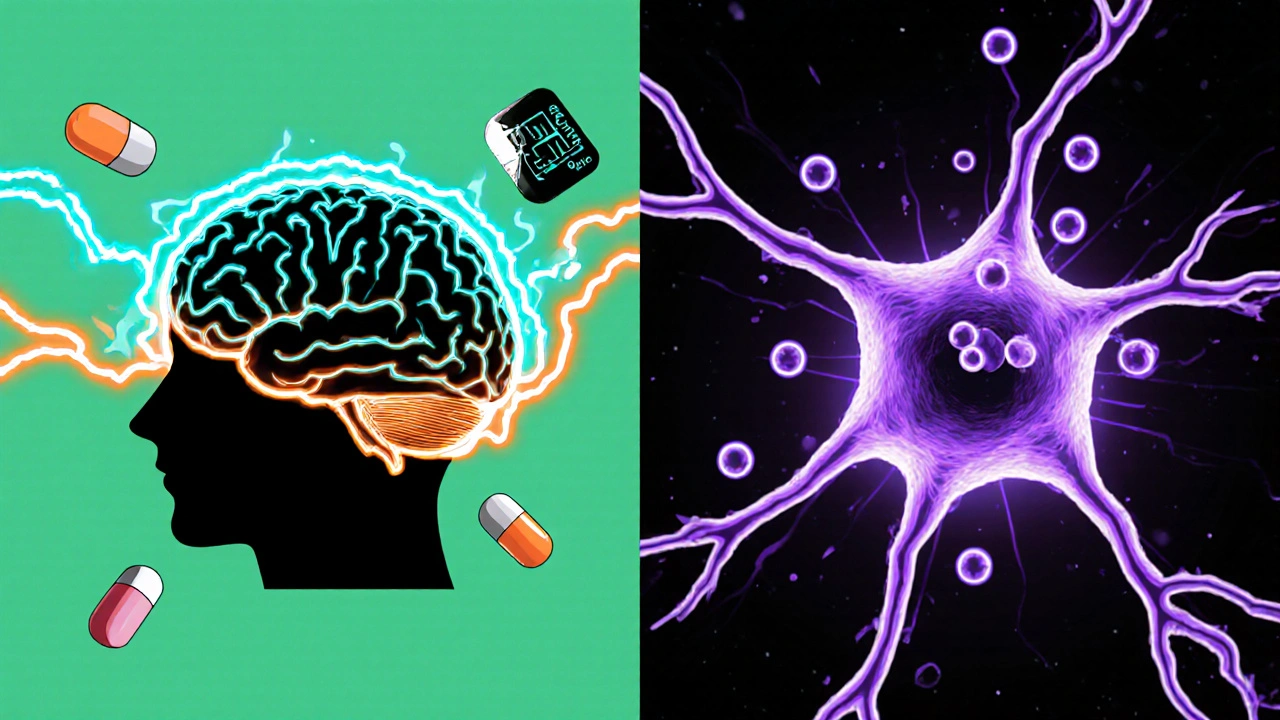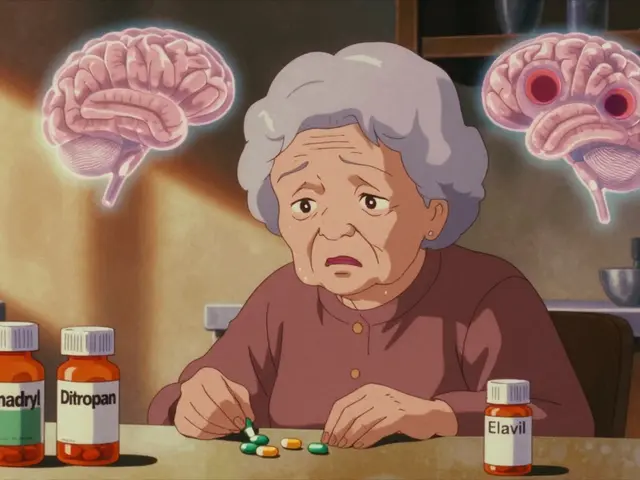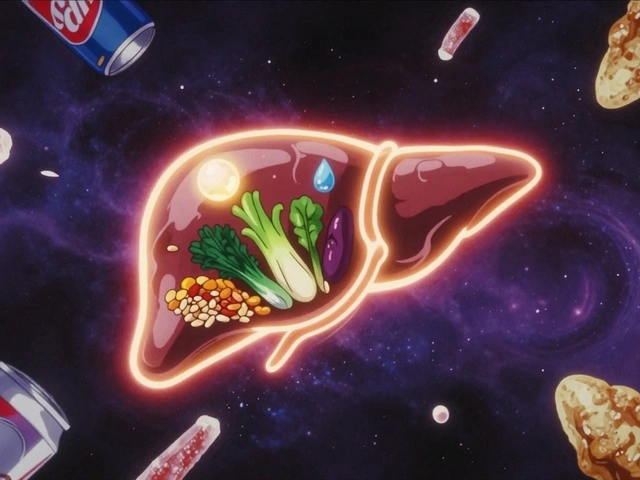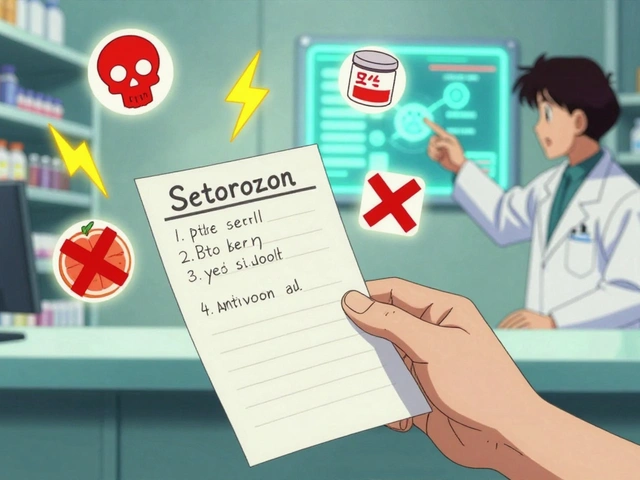Smoking Cessation Medication Selector
Find Your Best Quitting Aid
Answer a few quick questions to get personalized recommendations based on clinical evidence and your health profile.
Looking to quit smoking but unsure which medication suits you best? Zyban (the brand name for bupropion) has been a go‑to option for years, yet a raft of alternatives-ranging from nicotine replacement therapy (NRT) to newer prescription pills-promise similar or higher success rates. This guide breaks down the science, costs, side‑effects, and real‑world outcomes so you can pick the right path without wading through vague medical jargon.
What Is Zyban (Bupropion) and How Does It Work?
Zyban (Bupropion) is a prescription medication originally approved as an antidepressant (Wellbutrin) and later repurposed for smoking cessation. It belongs to the class of norepinephrine‑dopamine reuptake inhibitors (NDRIs). By boosting dopamine and norepinephrine levels in the brain, Zyban reduces cravings and eases withdrawal symptoms without delivering nicotine.
The typical quit plan starts with a 7‑day “run‑in” phase at 150 mg once daily, followed by 150 mg twice daily for 7-12 weeks. Unlike nicotine‑based products, Zyban doesn’t cause a spike in heart rate or blood pressure, which makes it attractive for people with cardiovascular concerns.
Key Alternatives to Consider
Several other FDA‑ and NZ‑approved options compete with Zyban. Below are the most common ones, each with a brief definition and the mechanism that makes them work.
- Varenicline (brand name Chantix) is a partial agonist at the α4β2 nicotinic acetylcholine receptor, delivering a mild nicotine‑like signal while blocking the reinforcing effects of actual nicotine.
- Nicotine Replacement Therapy (NRT) includes patches, gum, lozenges, inhalers, and nasal sprays that provide controlled doses of nicotine to taper dependence.
- Cytisine is a plant‑derived alkaloid used in Eastern Europe; it acts as a partial agonist at nicotinic receptors, similar to varenicline but at a lower cost.
- Clonidine is an antihypertensive that can blunt withdrawal symptoms when used off‑label for smoking cessation.
Side‑Effect Profiles: What to Expect
Every quit‑aid carries trade‑offs. Knowing the most common adverse events helps you weigh risk vs. benefit.
| Medication | Typical Side‑Effects | Serious Risks |
|---|---|---|
| Zyban (Bupropion) | Insomnia, dry mouth, headache | Seizure risk at >450 mg/day, rare allergic reaction |
| Varenicline (Chantix) | Nausea, vivid dreams, insomnia | Neuropsychiatric events (rare), possible cardiovascular events |
| Nicotine Patch | Skin irritation, sleep disturbance | Rare dizziness or palpitations |
| Nicotine Gum | Mouth soreness, hiccups | Rare throat irritation |
| Cytisine | Nausea, vomiting, headache | Limited long‑term safety data |
| Clonidine | Drowsiness, dry mouth, constipation | Hypotension, rebound hypertension on abrupt stop |

Efficacy: How Well Do These Options Help People Quit?
Clinical trials and real‑world studies give us a ballpark success rate, usually measured as continuous abstinence at 6 months.
- Zyban (Bupropion): 20‑30 % quit rate, slightly higher than placebo (≈15 %).
- Varenicline (Chantix): 30‑45 % quit rate, the highest among prescription pills.
- NRT (combined patch + gum): 15‑25 % quit rate, comparable to Zyban when used correctly.
- Cytisine: 25‑35 % quit rate in Eastern European cohorts, similar to varenicline but with less robust data.
- Clonidine: 10‑15 % quit rate, usually reserved for people who cannot tolerate nicotine or bupropion.
These numbers assume proper counseling, a quit‑date plan, and adherence. Real‑world success often hinges on behavioral support-counselling, quit‑lines, or digital apps can boost any medication’s outcome by 5‑10 %.
Cost & Accessibility: What Will You Pay?
Affordability can tip the scales, especially in countries with limited drug coverage. Below is a quick snapshot of average costs in New Zealand (2025) and the United States for a typical 12‑week course.
| Medication | NZ (NZD) | US (USD) |
|---|---|---|
| Zyban (Bupropion) | ≈$60 | ≈$150 |
| Varenicline (Chantix) | ≈$120 | ≈$300 |
| Nicotine Patch + Gum (combined) | ≈$90 | ≈$200 |
| Cytisine | ≈$25 | ≈$60 |
| Clonidine (off‑label) | ≈$15 | ≈$40 |
Insurance coverage varies. In New Zealand, the Pharmaceutical Management Agency (PHARMAC) lists bupropion and varenicline as subsidised for eligible smokers, while NRT is often partially covered. Always check your local formulary.
Choosing the Right Option for You
Here’s a quick decision‑tree you can run through in a few minutes:
- Do you have a history of seizures, eating disorders, or bipolar disorder?
-Yes → Avoid Zyban. Consider NRT or varenicline. - Are you pregnant or breastfeeding?
-Yes → NRT is generally safest; discuss with your clinician. - Do you prefer a non‑nicotine pill?
-Yes → Varenicline or Zyban are the primary choices. - Is cost a major barrier?
-Yes → Cytisine (if available) or generic bupropion are the cheapest prescription options. - Do you experience strong nausea with pills?
-Yes → Try patch‑first NRT or low‑dose clonidine under medical supervision.
Never start a new medication without a brief medical review-some drugs interact with antidepressants, antipsychotics, or blood‑pressure meds.

Quick Comparison Table
| Feature | Zyban (Bupropion) | Varenicline | NRT (Patch+Gum) | Cytisine |
|---|---|---|---|---|
| Mechanism | DA/NE reuptake inhibition | Partial nicotinic agonist | Controlled nicotine delivery | Partial nicotinic agonist |
| Prescription Needed | Yes | Yes | Usually OTC | Yes (in some regions) |
| Typical Duration | 12 weeks | 12 weeks | 6‑12 weeks (varies) | 12 weeks |
| 6‑Month Quit Rate | 20‑30 % | 30‑45 % | 15‑25 % | 25‑35 % |
| Common Side‑Effects | Insomnia, dry mouth | Nausea, vivid dreams | Skin irritation, hiccups | Nausea, headache |
| Seizure Risk | Elevated at high dose | None | None | None |
| Cost (NZD) | ~$60 | ~$120 | ~$90 | ~$25 |
Putting It All Together
There’s no one‑size‑fits‑all answer. If you’re looking for a non‑nicotine pill and can tolerate a mild stimulant effect, Zyban offers a solid efficacy record with a modest side‑effect profile. If you need the highest quit rates and can manage occasional nausea, varenicline often outperforms. Budget‑conscious smokers in regions where it’s available might favor cytisine, while anyone uneasy about pills can lean on NRT.
Remember, medication is only half the battle. Pair any drug with behavioral counseling, a quit‑date, and a support network for the best odds of staying smoke‑free.
Frequently Asked Questions
Can I use Zyban and nicotine patches together?
Yes, combining bupropion with NRT can increase success rates, especially for heavy smokers. Talk to your doctor about dosing to avoid overlapping side‑effects such as insomnia.
What is the biggest advantage of varenicline over Zyban?
Varenicline typically delivers a higher 6‑month quit rate (30‑45 % vs. 20‑30 %). It works directly on nicotine receptors, which many smokers find more effective at reducing cravings.
Is Zyban safe for people with high blood pressure?
Because Zyban does not contain nicotine, it usually does not raise blood pressure. However, it can cause a slight increase in heart rate in some individuals, so monitoring is advised.
How quickly will I feel relief from cravings after starting Zyban?
Most users notice a reduction in cravings within the first week of the full‑dose regimen, though full benefits typically appear after 2-3 weeks.
Can I use Zyban if I’m trying to quit vaping?
Yes, bupropion works for nicotine dependence from cigarettes, vaping, or smokeless tobacco. The same dosing schedule applies.









10 Comments
Leo Chan
Oct 19 2025If you’re staring at the table of options and feeling overwhelmed, take a breath-every quit plan starts with one small decision. Zyban gives you a non‑nicotine pill that tackles cravings by nudging dopamine, which can be a real game‑changer if you hate the tickle of a patch. Pair it with some counseling or a quit‑app and you’ll likely see that 20‑30 % success number inch upward. Remember, the best medication is the one you’ll actually stick with, so pick what feels doable for your daily routine.
jagdish soni
Oct 24 2025One could argue that the allure of a shiny new drug masks the deeper existential battle with addiction
Yet the pharmacology is but a whisper against the roaring void of habit
Choose wisely.
Latasha Becker
Oct 29 2025From a pharmacodynamic perspective, bupropion functions as a norepinephrine‑dopamine reuptake inhibitor, thereby modulating mesolimbic reward circuitry implicated in nicotine dependence. Clinical meta‑analyses consistently demonstrate a relative risk reduction of approximately 1.4 when juxtaposed against placebo, translating to a 20‑30 % absolute quit rate. Conversely, varenicline operates as a high‑affinity partial agonist at α4β2 nicotinic receptors, which accounts for its superior efficacy metrics ranging from 30‑45 % in randomized controlled trials. Nicotine replacement therapy, while mechanistically straightforward-delivering exogenous nicotine via transdermal or buccal routes-exhibits a broader variance in outcomes due to adherence heterogeneity. Cytisine, the plant‑derived alkaloid, merits consideration in cost‑constrained environments, as its pharmacokinetic profile approximates that of varenicline albeit with a truncated half‑life. The safety signal for bupropion remains dominated by seizure propensity at dosages exceeding 450 mg per day, a threshold rarely breached in standard cessation protocols. Varenicline’s adverse event spectrum is weighted toward gastrointestinal upset and vivid dreaming, with rare neuropsychiatric manifestations that necessitate vigilant monitoring. Economic analyses reveal that the incremental cost‑effectiveness ratio (ICER) for bupropion relative to generic NRT hovers around $1,200 per quality‑adjusted life year in the United States context. In contrast, the ICER for varenicline can approach $2,500 per QALY, a figure that may be mitigated by insurance formularies or manufacturer coupons. Health system policymakers must therefore weigh direct drug acquisition costs against downstream savings derived from reduced smoking‑related morbidity. Behavioral adjuncts-cognitive‑behavioral therapy, quit‑lines, mobile health platforms-have been shown to augment pharmacologic success rates by an additional 5‑10 % irrespective of the chosen agent. Patient‑level factors such as comorbid psychiatric illness, cardiovascular risk profile, and personal preference for a non‑nicotine versus nicotine‑based regimen critically shape the risk‑benefit calculus. For instance, individuals with a history of seizure disorder are contraindicated for bupropion and should be steered toward NRT or varenicline after appropriate psychiatric assessment. Pregnant or lactating patients, on the other hand, are generally advised to limit exposure to nicotine‑containing products and prioritize behavioral support over pharmacotherapy. Ultimately, the decision matrix collapses into a shared decision‑making process wherein the clinician conveys evidence‑based probabilities, side‑effect profiles, and cost implications, allowing the patient to select the modality that aligns with their values and lived context.
parth gajjar
Nov 2 2025Such a labyrinth of numbers and risks feels like a modern tragedy
One wonders if the cure is not the same as the poison.
Maridel Frey
Nov 7 2025When considering any cessation aid, it is prudent to conduct a brief medical review to rule out contraindications such as seizure disorders or uncontrolled hypertension. The cost differential between bupropion and varenicline can be mitigated by checking your insurer’s formulary or applying for patient assistance programs. Combining pharmacotherapy with behavioral counseling consistently improves outcomes, so schedule a session with a certified quit‑coach if possible. Ultimately, the most effective choice is the one you feel confident adhering to over the long term.
DHARMENDER BHATHAVAR
Nov 12 2025Pick the medication that fits your schedule, whether it’s a once‑daily pill or a patch you change each week. Keep a diary of cravings to spot patterns early. Celebrate small victories; each smoke‑free hour builds momentum. Stay in touch with your healthcare provider for dose adjustments if side‑effects emerge.
Jay Kay
Nov 16 2025Let’s be real: most people grab the cheapest option and hope it works. Bupropion may look shiny, but varenicline actually outperforms it in head‑to‑head trials. If you’re not willing to tolerate a bit of nausea, you’ll never get the higher quit rates. Bottom line, cheap doesn’t always mean smart.
Rakhi Kasana
Nov 21 2025Your enthusiasm for cheap fixes is admirable, but efficacy matters more than the price tag.
A modest investment in a proven drug often saves money in the long run by preventing relapse.
Ankitpgujjar Poswal
Nov 26 2025Listen up – quitting smoking is a battle you can win, and the right tool makes all the difference. Bupropion gives you a non‑nicotine edge, while varenicline hits the cravings hard; choose the one that aligns with your health profile. Pair whatever you pick with daily coaching, a quit‑date, and a solid support circle, and you’ll crush that habit. No excuses, just commitment.
Bobby Marie
Nov 30 2025Good luck, and remember consistency beats perfection every time.